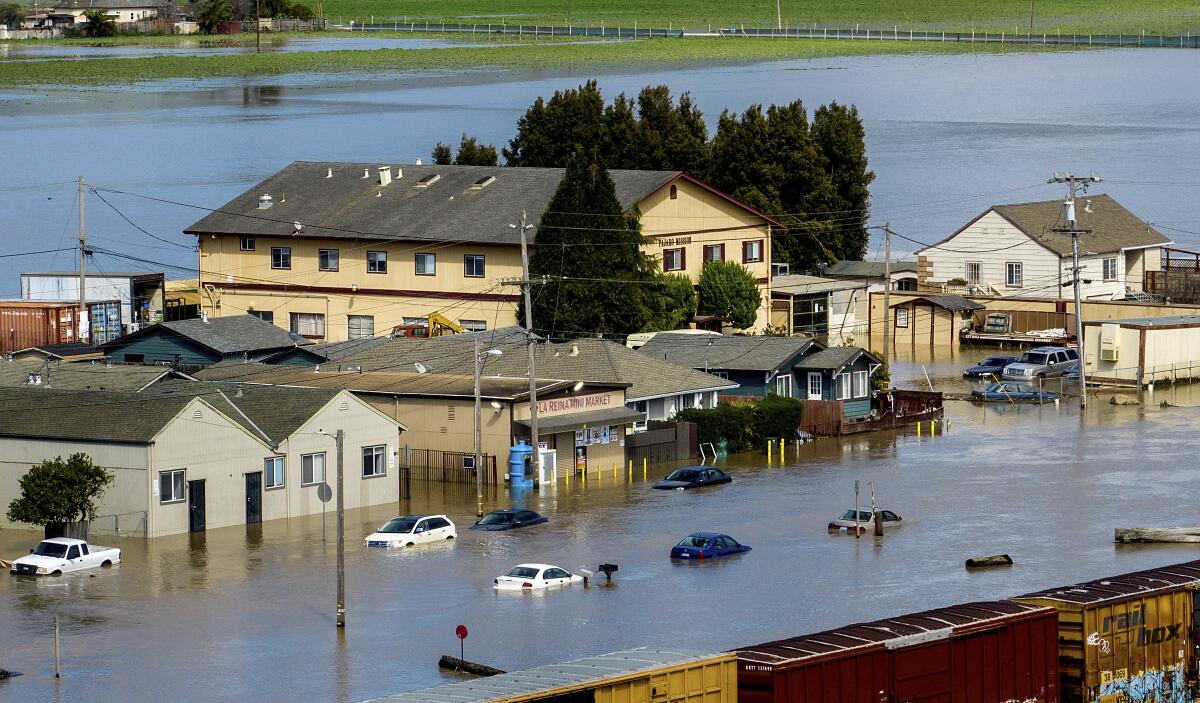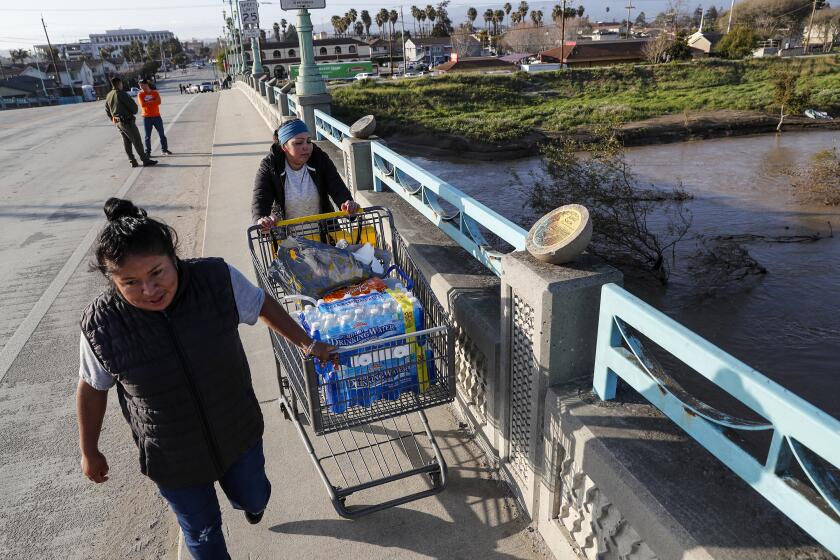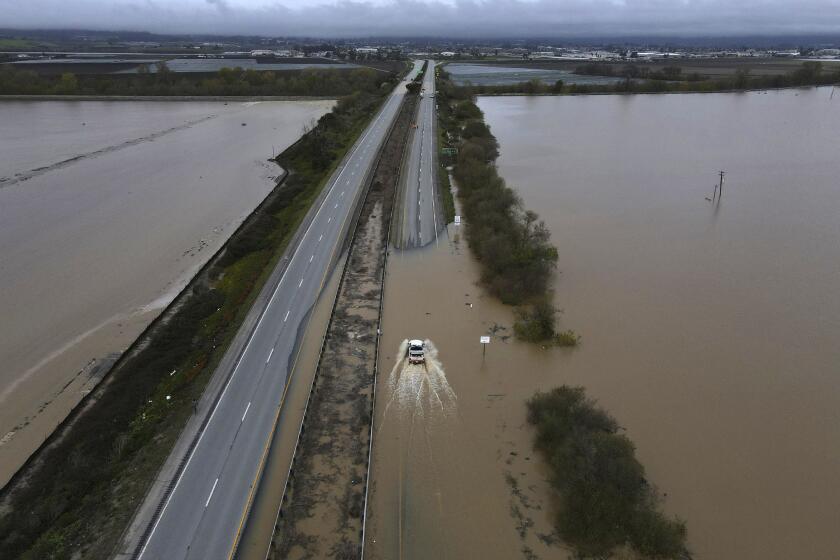California lawmakers urge Army Corps of Engineers to speed up Pajaro levee repairs

- Share via
It took a major disaster and the prolonged displacement of hundreds of farmworkers, but the small Monterey County community of Pajaro is finally getting the help and attention of federal, state and local lawmakers its residents have sought for decades.
On Tuesday, California lawmakers sent a letter to Michael Connor, assistant secretary of the Army for Civil Works, urging him to speed construction on a levee that failed earlier this month, flooding the small town, and to provide immediate emergency relief funds to shore up the damaged infrastructure.
In addition, Gov. Gavin Newsom requested a presidential major disaster declaration that, if approved, could bring support and relief to the more than 2,000 residents who had to evacuate as the Pajaro River poured onto their streets and into their homes.
“[W]e ask that you take immediate steps to provide emergency relief to the towns of Pajaro and Watsonville and to accelerate construction of the federally authorized levee project,” wrote Democratic Sens. Alex Padilla and Dianne Feinstein, along with Reps. Zoe Lofgren (D-San Jose) and Jimmy Panetta (D-Carmel Valley Village).
Founded as a labor camp for agricultural workers, the small community of Pajaro has long languished in the shadow of nearby Watsonville.
In an interview Wednesday, Padilla said there are many communities throughout the state and nation that sit at this interface of natural disaster, economic disadvantage and crumbling infrastructure.
What happened in Pajaro was “surprising but not shocking,” and it is this kind of inequity that spurred him into public service, where he could try to make change — “so that disadvantaged communities, more broadly throughout California and throughout the country, aren’t continuously left out,” he said.
For decades, state and federal officials had known the levee in Pajaro was inadequate. The U.S. Army Corps of Engineers, which built the levee in 1949, had rejected plans to rebuild it because, as one official told The Times, it never penciled out: “It’s a low-income area. It’s largely farmworkers. ... Therefore, you get basically Bay Area construction costs but the value of property isn’t all that high.”
In 2021, just days before leaving office, R.D. James, President Trump’s assistant secretary of the Army for Civil Works — a political appointment —penned a memo directing the corps to expand the criteria for project consideration by giving equal consideration to “economic, environmental and social categories.”
The directive enabled the corps to go beyond economic justifications and use these other categories when deciding where to allocate money and effort, said Stu Townsley, the Army Corps of Engineers’ deputy district engineer for project management for the San Francisco region.
Last fall, after decades of inaction, the corps, along with state and local agencies, was finally able to secure the roughly $400 million required to rebuild the levee. Construction was targeted to begin in 2025.
“Unfortunately, Mother Nature didn’t wait,” said Padilla, who had been in Pajaro in October to celebrate the funding.
This spring, a series of strong storms pummeled the Central California coast and saturated the land within the Pajaro River watershed. That surfeit of water fed the typically trickling river into a torrent — overtopping and weakening the 75-year old earthen levee.
For years, experts had been warning Monterey and Santa Cruz County that the levee along the Pajaro River could fail.
Now, as residents are beginning to assess the damage, lawmakers are pleading with Army Corps officials to fast-track the repairs and construction — potentially getting it started by the end of this year, or early next year.
“I’ve gotten assurances from Michael Connor (the Army Corps assistant secretary) for him not just to be responsive, but to kind of see himself as part of the assessment, so what can be done to send people back to a better standard than what was before,” said Padilla.
“A lot of times these emergency funds are only eligible to restore what was in place. So clearly, we saw the levees aren’t good enough. Heaven forbid we get another significant storm this year ... we’re going to need a better levee infrastructure and a capacity that’s improved from the current situation,” he said.
However, getting it done quickly can prove challenging, said Townsley, noting the project already was on an expedited track.
Townsley and others noted the federal and state permitting required for a major infrastructure project such as this, as well as the soliciting and bidding for contractors.
Padilla said those kinds of bureaucratic constraints could be addressed.
“Everybody seems to understand that” something needs to happen quickly, he said. “If you have to change some rules, create some flexibility and even leverage the flexibility that’s afforded us through the major disaster declarations ... in the short term, we have to do what we have to do.”
More to Read
Sign up for Essential California
The most important California stories and recommendations in your inbox every morning.
You may occasionally receive promotional content from the Los Angeles Times.













